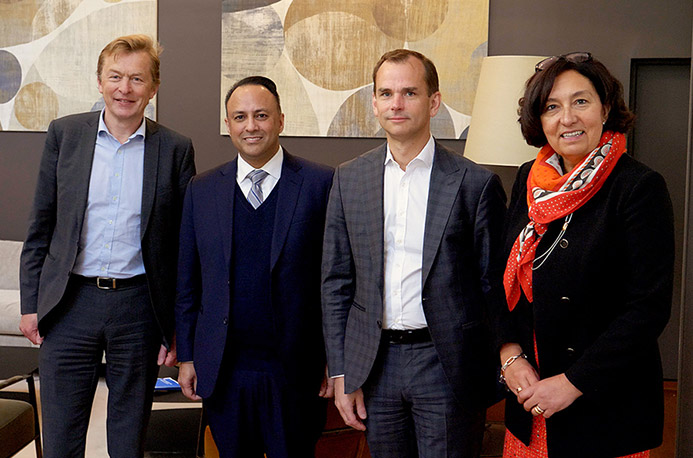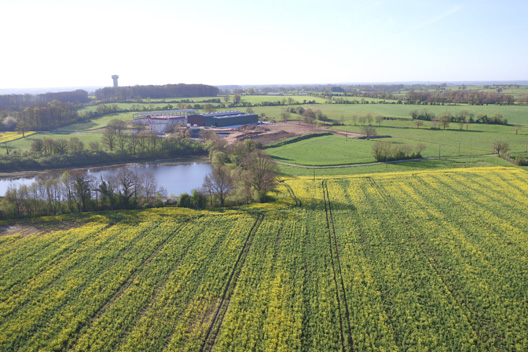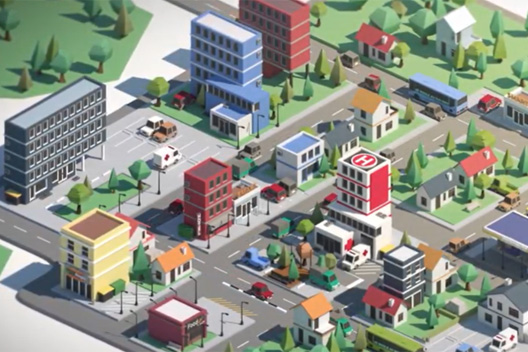Renewable Gas Infrastructure Provides Secure Path to Decarbonization

Leveraging existing gas infrastructure and expertise helps deliver the most affordable and resilient path to carbon neutrality.
Since the 2015 Paris Agreement, governments, scientists, and the private sector have been coming into alignment on the tools the world needs to achieve carbon neutrality by mid-century. At the same time, geopolitical events have placed a renewed focus on the security of domestic energy supply as an urgent priority. New research and collaboration among researchers and energy companies around the world, as well as successes in the operational development of renewable gases (energy produced from renewable sources) in many countries, are giving policymakers a clearer view of how decarbonization and energy security are both within our reach.
Renewable gases projected to be almost half of the net-zero emissions energy consumption by 2050*
*According to an analysis from Green Hydrogen Coalition, the International Panel on Climate Change (IPCC), and the International Energy Agency (IEA).

Scientists and regulators ranging from cities around the world to international bodies have embraced the need for a broad set of tools to achieve net-zero greenhouse gas emissions across all sectors of the economy. To achieve these targets by mid-century, global economies will need to rapidly scale up the energy supply so they can produce and transport clean renewable gases in a low-cost, safe, and reliable manner.
Yes, there will be more renewable electricity. But there is also much more attention these days on cleaner lower emissions molecules, like renewable gas (gas produced from decomposing organic waste) and clean renewable hydrogen (hydrogen produced by electrolysis from a renewable source), that experts agree will be needed to make renewable energy available 24/7/365, and to power industries that cannot be plugged in. For example, the European Commission has set a target of 35 billion cubic meters of annual biomethane production and twenty million tons of renewable and low carbon hydrogen consumption by 2030 through its “Repower EU” plan ».
Make no mistake about it – the energy transition requires reliable, flexible, and resilient infrastructure, as well as the ability to leverage and repurpose our existing infrastructure and energy know-how to make our present systems work seamlessly with new technologies. It requires skilled labor, and cooperation and planning among governments, residents, environmental groups, businesses, and major sectors of our economy like manufacturers, power generators, and transportation providers.
Leveraging the size and scale of existing infrastructure and workforces is key to accelerating the clean energy transition.
Today, numerous projects around the world demonstrate how existing natural gas infrastructure—and the skilled workforce that builds, operates, and maintains it— can also safely deliver renewable gas, or renewable hydrogen.
From our nations’ leaders to the local policymakers who worry about how best to balance our energy supply security and decarbonization needs, the implications are clear:
It will take continued investment in energy infrastructure and our energy workers, as well as integrated planning to deliver the most affordable, resilient, and technologically proven path to full carbon neutrality.
Without diverse decarbonization options, any single path risks us missing our mid-century decarbonization goals, jeopardizes energy reliability, and could subject millions of energy customers to high and unpredictable utility costs.
In the long run, leveraging our existing infrastructure systems and our decades of expertise can help make the transition to clean energy by mid-century easier and more affordable for our customers, rather than starting from scratch.
In Europe for example, more than a dozen companies working together through the Hydrogen Backbone Initiative have demonstrated that up to 70% of the infrastructure needed to carry clean renewable hydrogen to hubs throughout the European Union could be developed by repurposing existing infrastructure.
France has proven a potential of 100% renewable gases in 2050 and calls for at least 20 percent of gas consumption by 2030 according to the Agency for Environment and Energy Management (ADEME).
In the U.S., the federal government has implemented clean hydrogen and fuel cell incentives to help lower production costs and accelerate the adoption of these clean fuels. The federal government is also investing billions of dollars to develop regional hydrogen and carbon management hubs across the country.
Regulators last year made California the first state in the country to adopt a renewable gas standard, which requires utilities to replace at least 12% of the traditional gas it delivers to core customers with renewable gas by 2030.
Renewable Gas Infrastructure Provides Secure Path to Decarbonization - Document

Commitment to climate goals
